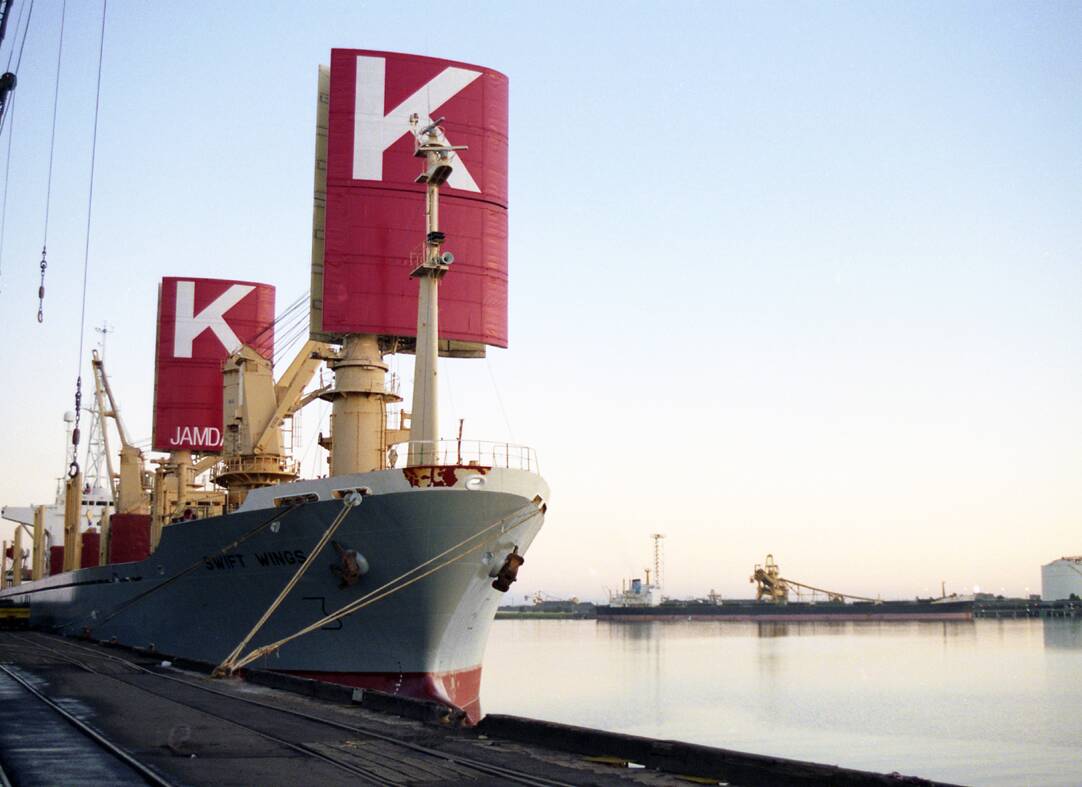

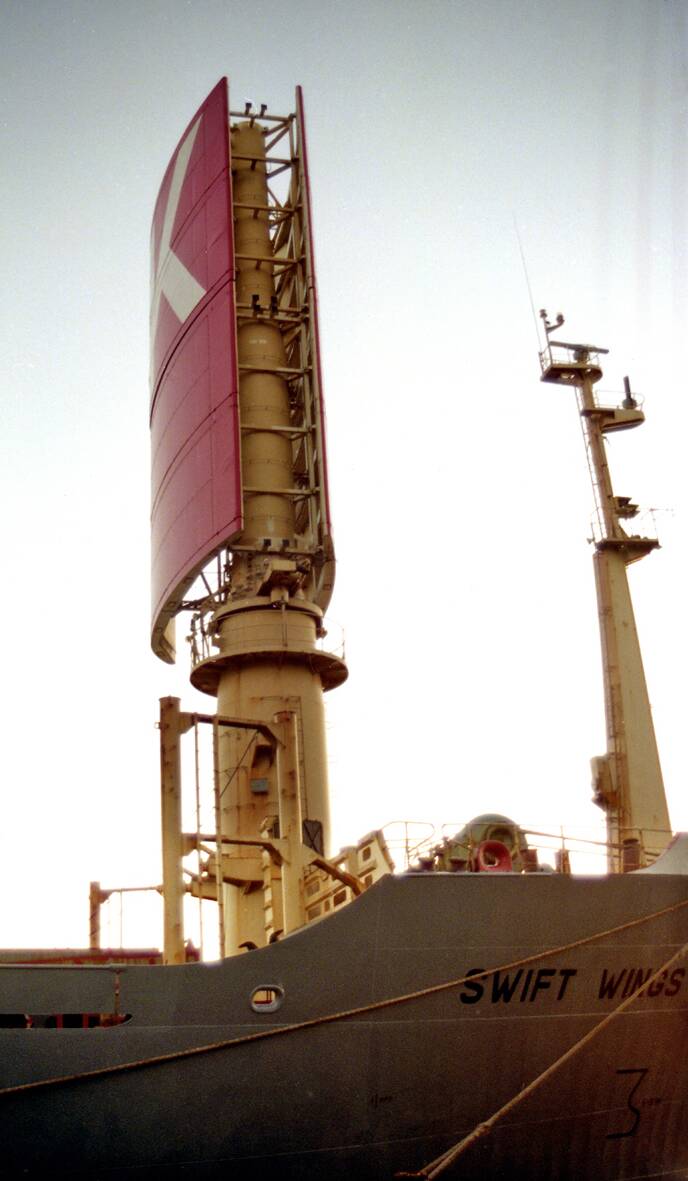

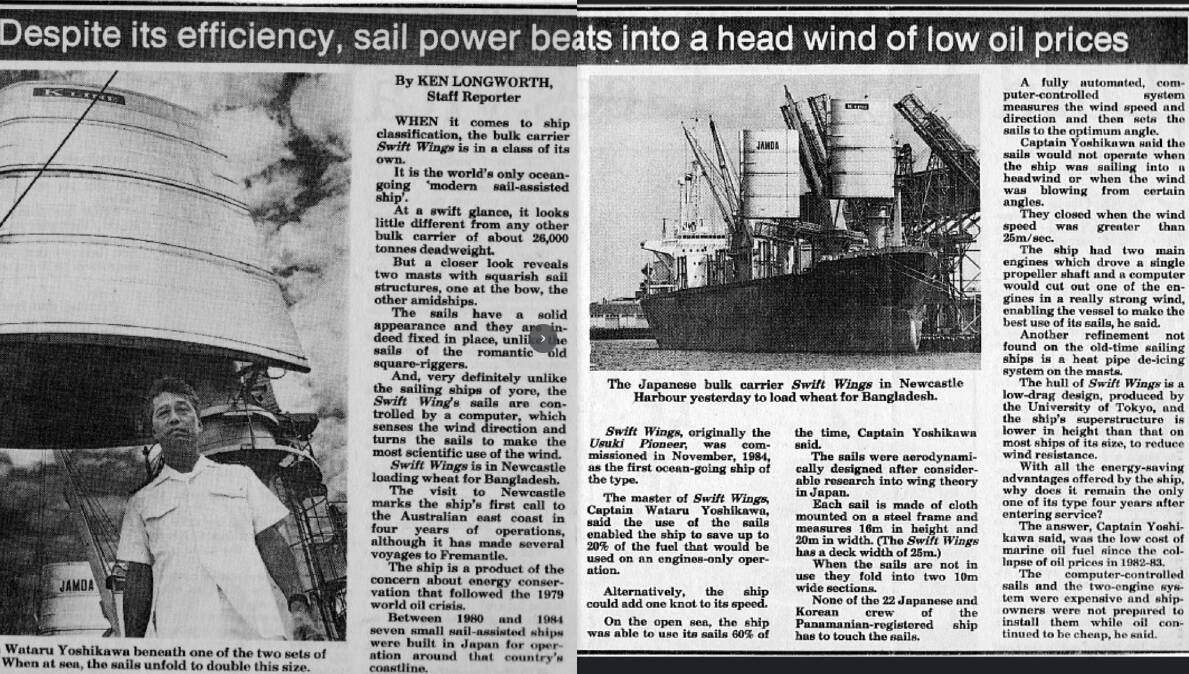
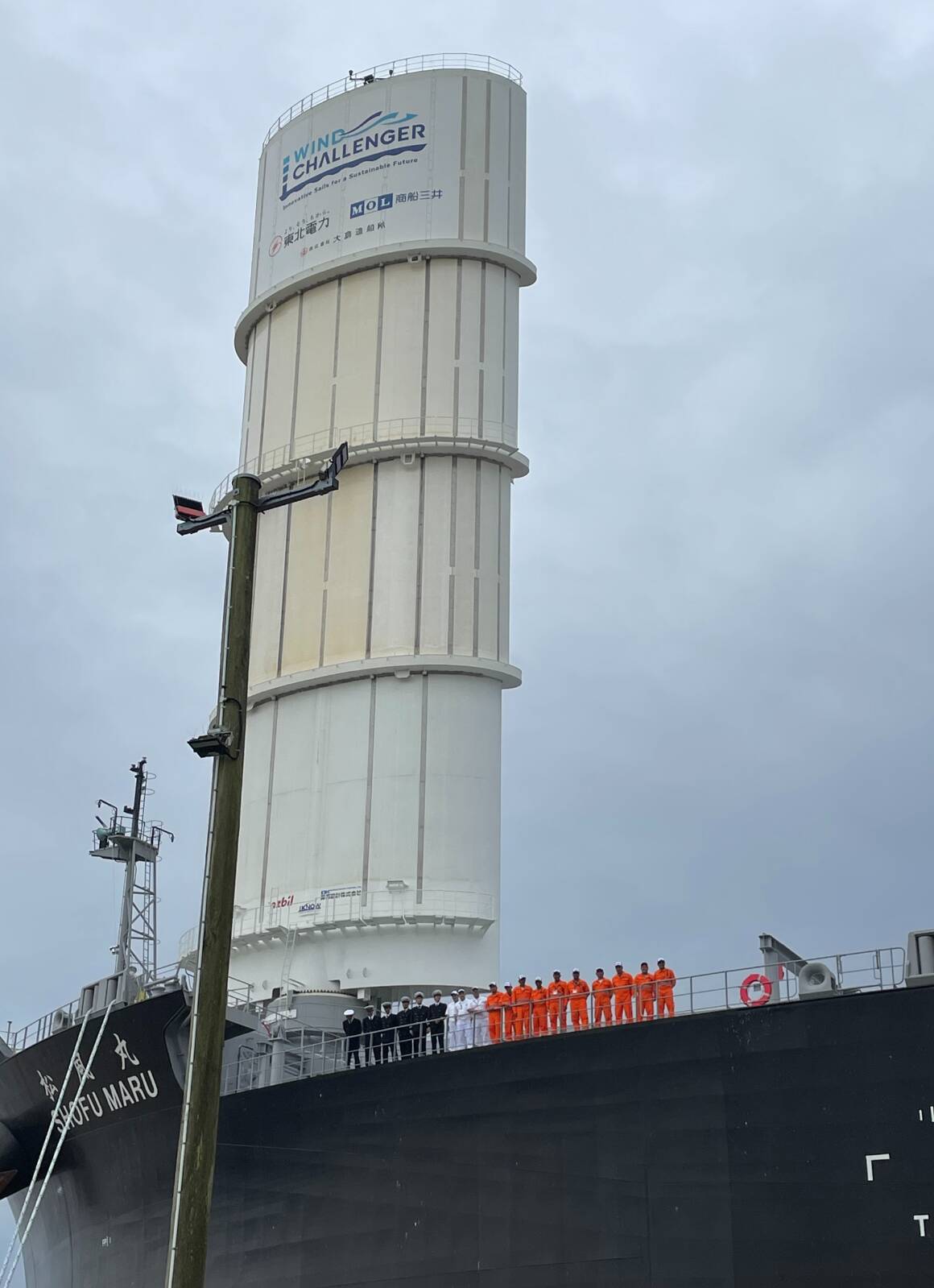
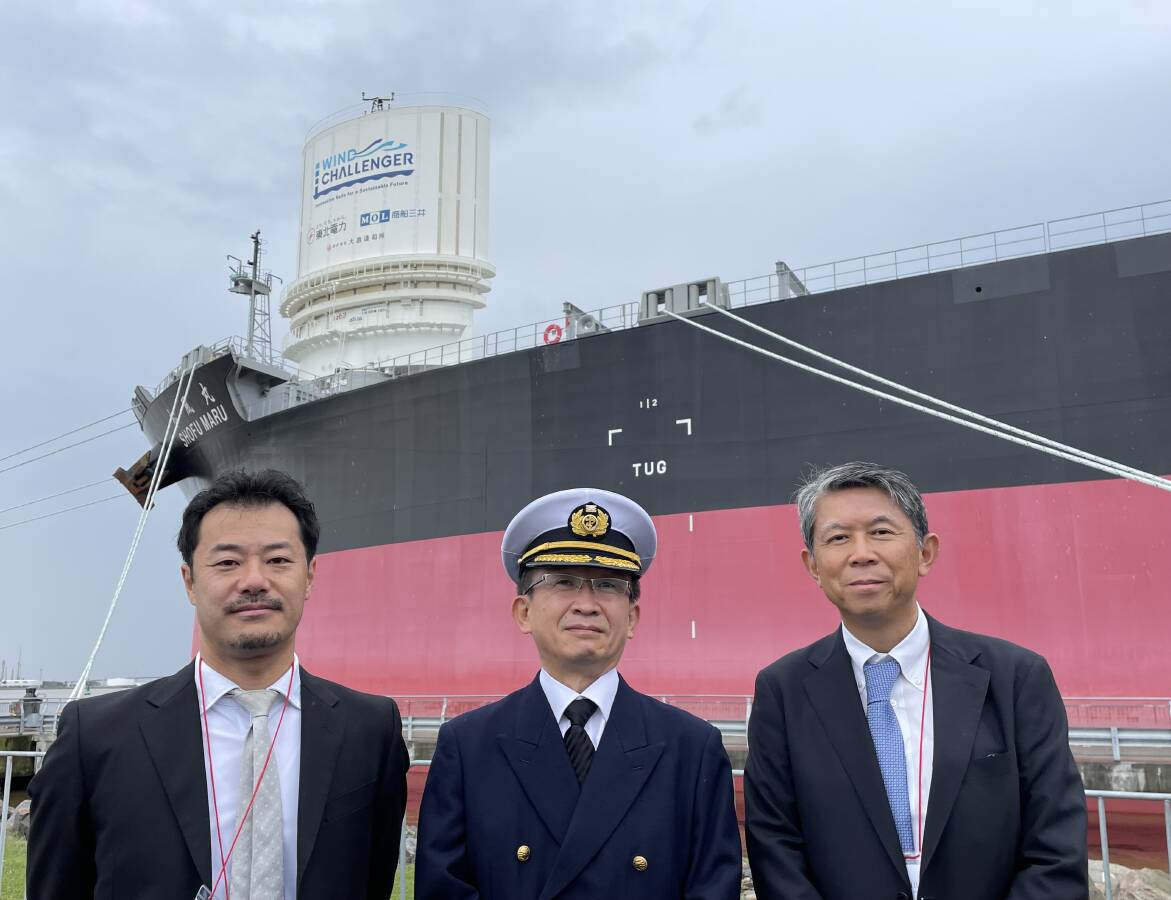

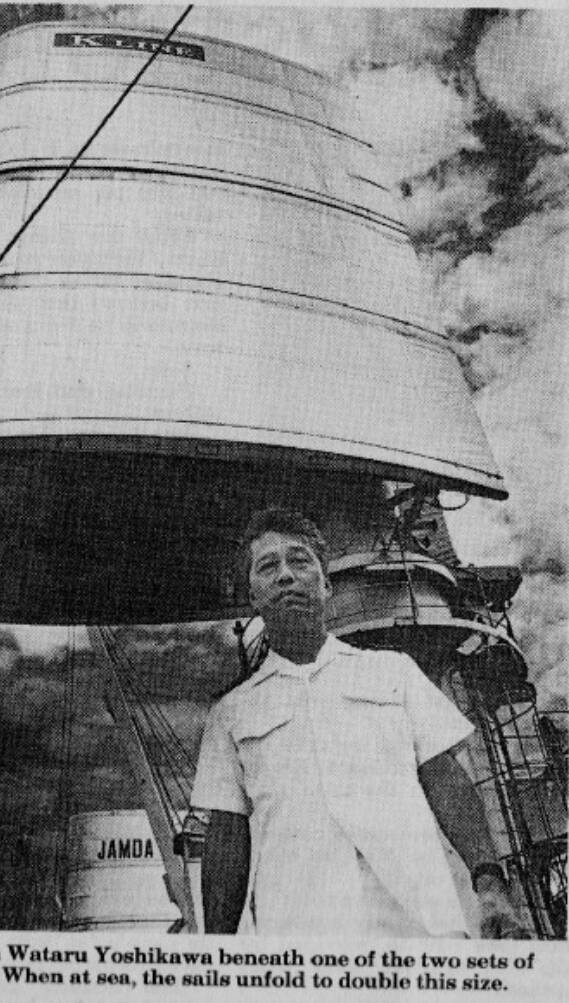

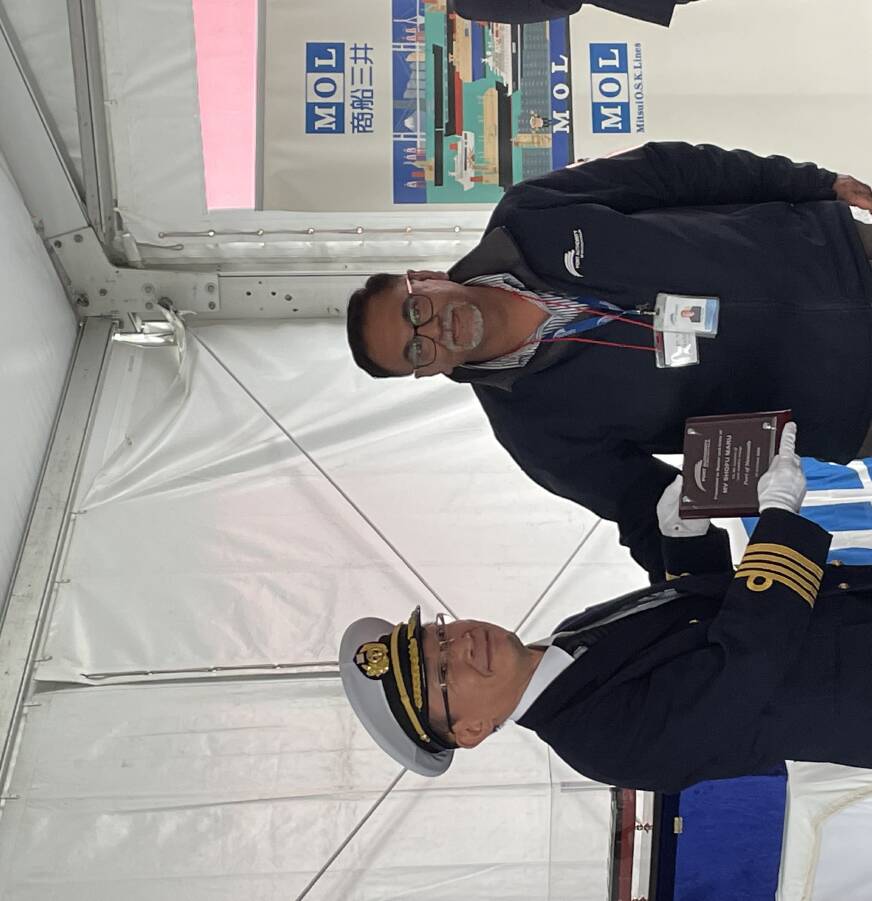

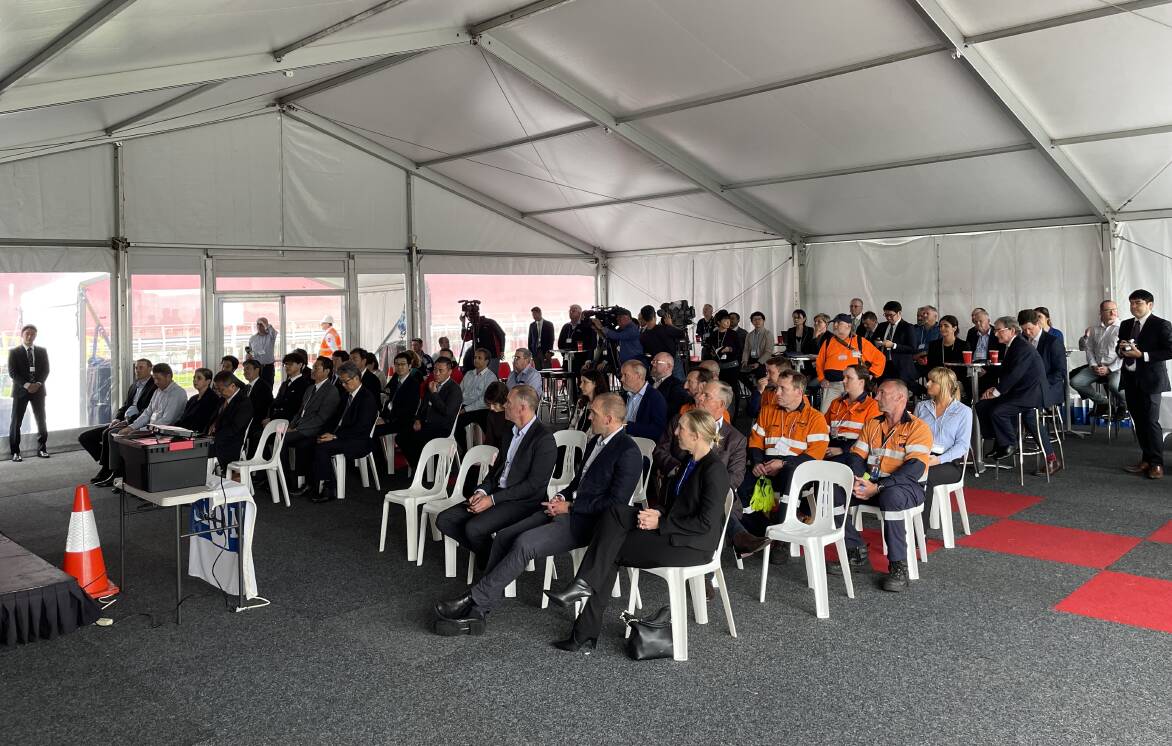
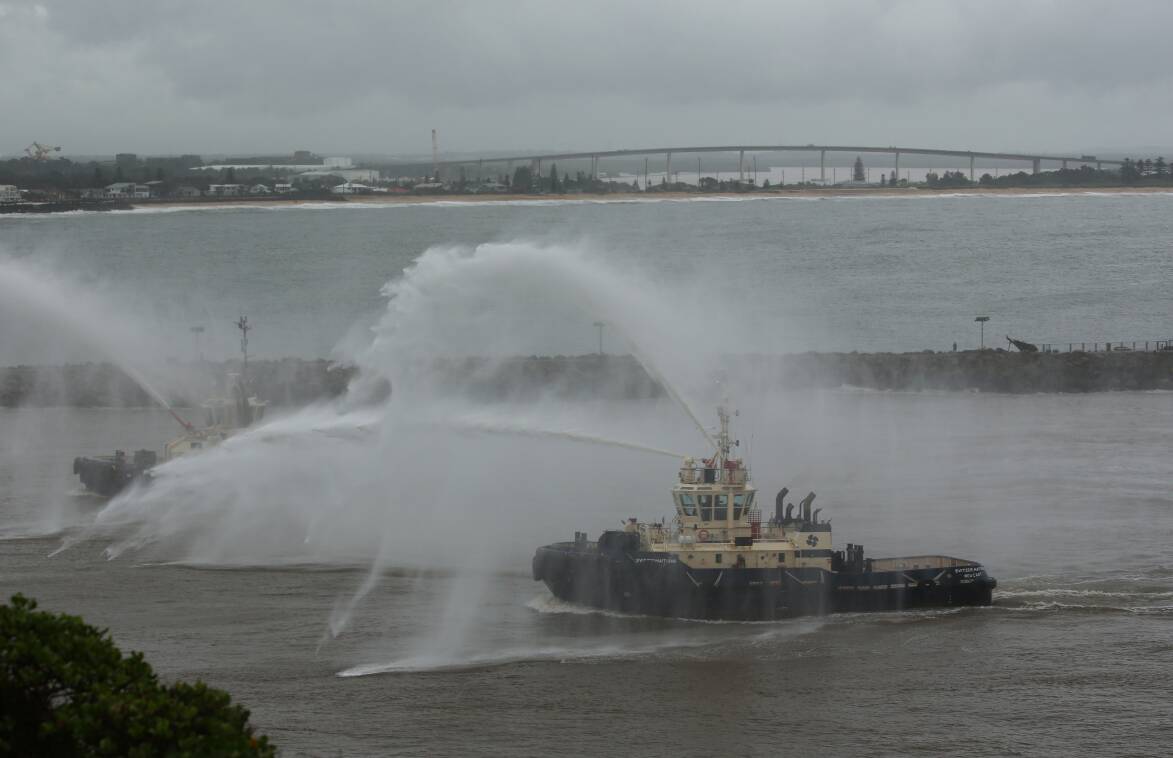
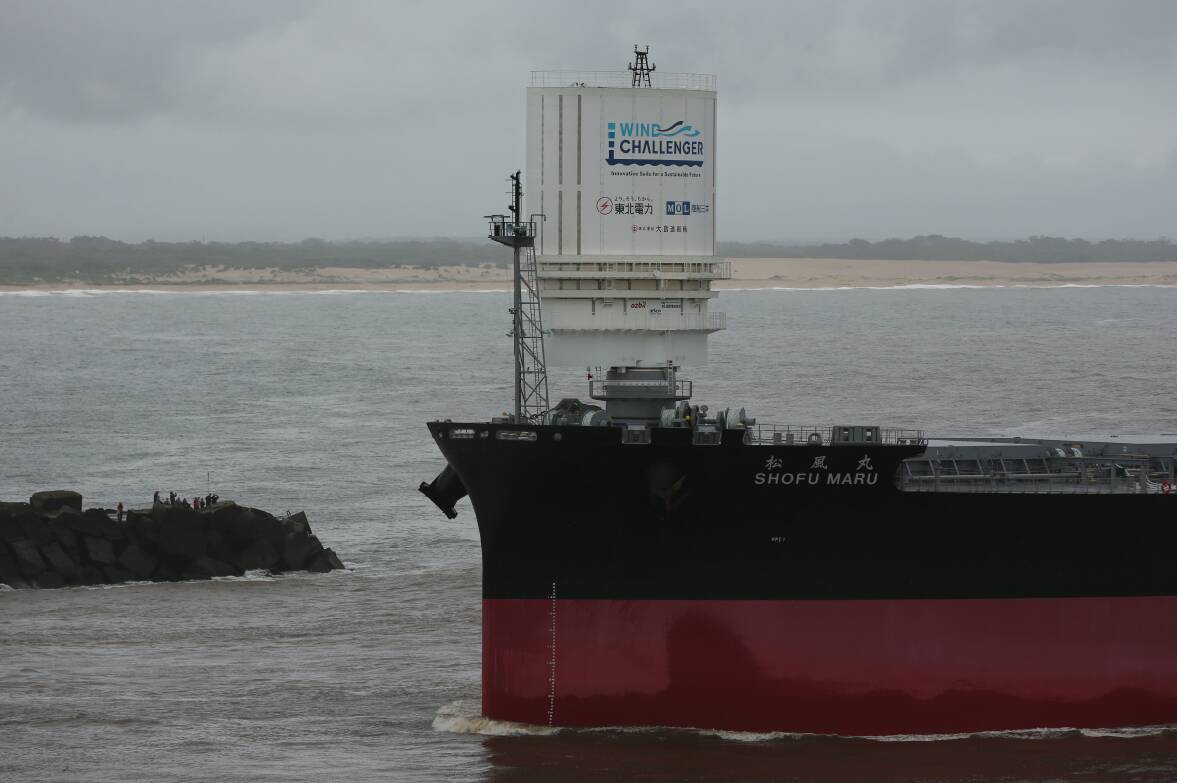
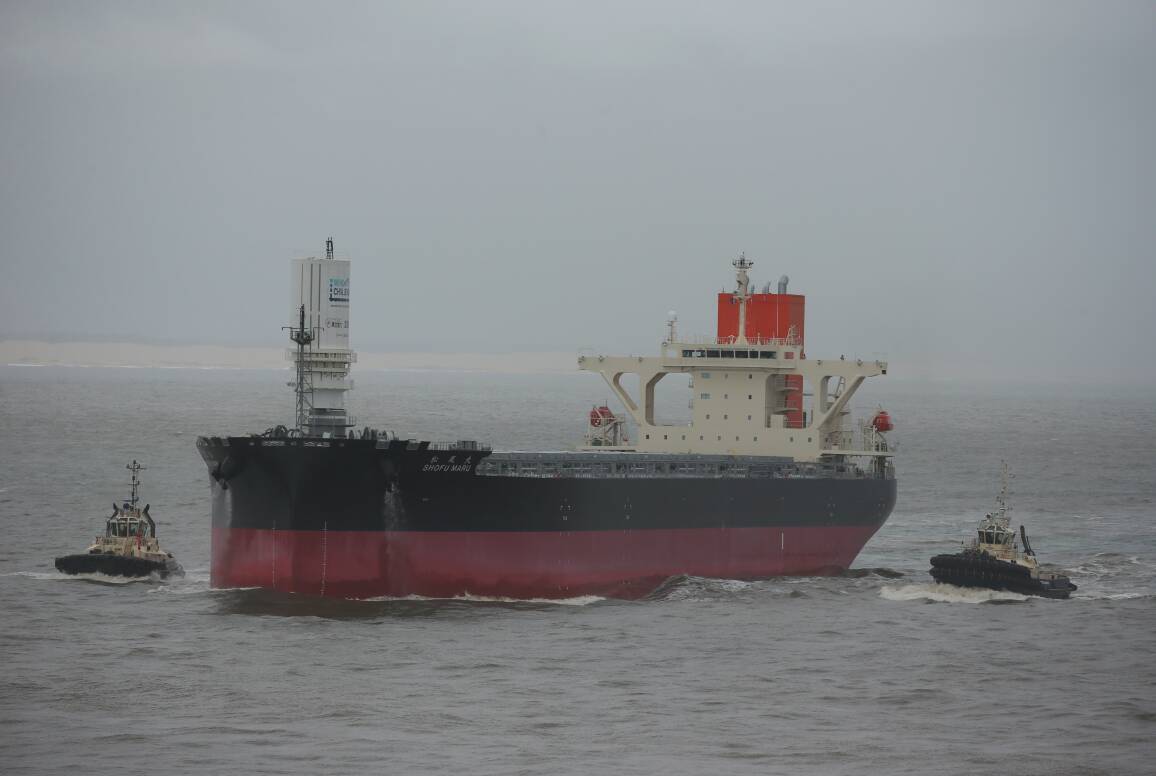
WHEN I was a cadet journalist with the Newcastle Herald a long, long time ago, some of the old heads that taught me had some very strict rules about writing.
One was to be very careful about saying something was the biggest, the best, the oldest or the newest. And the one to be the most careful with was "first". Someone will always prove you wrong, I was told. And that went doubly so for "world first".
Those ideas have stuck with me over the years, so when I sat down to write Friday's article on yesterday's visit by the Shofu Maru - the Japanese bulk carrier carrying a 50-metre high sail to cut engine use and greenhouse emissions - I thought long and hard before going with the description that everyone else seemed to be using.
I Googled to check - obviously not well enough - and called it "the world's first modern cargo ship to use sail power to supplement its engines", which I thought was pretty accurate, since its engines were still doing 95 per cent of the work.
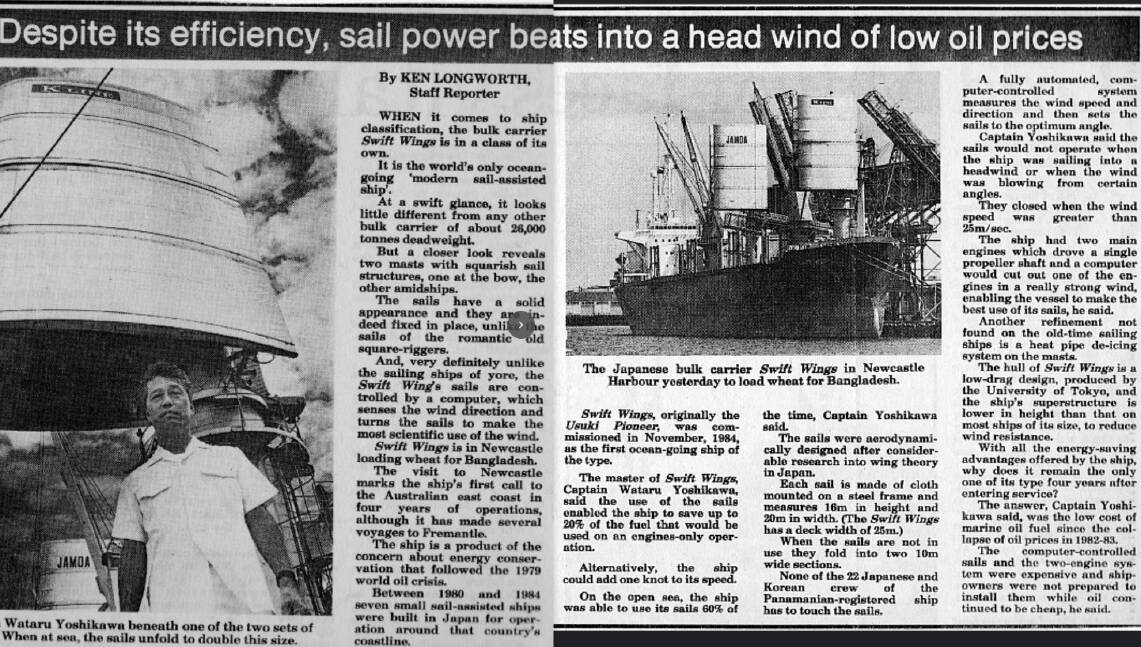
It didn't take long before the first eagle-eyed Herald reader was kind enough to alert me to the existence of a vessel called Swift Wings, which was built in Japan in 1984.
What's more, Swift Wings had featured in the Herald in 1988 in a picture story written by Ken Longworth, now happily retired from full-time journalism but still reviewing theatre for us.
That reader was Ian Wright, a retired master mariner and Newcastle harbour pilot, who sent me a clipping of the article, and added his own memories of the 1988 visit.
"I remember talking to the Japanese master," Ian said. "He was pretty reticent, but I don't think he thought much of the idea."
Soon after Ian got in touch, we received word from an old BHP hand, retired blast furnace fitter Bill Ruddick, who offered some colour photos of Swift Wings he took in 1991.
Bill said he took the photos when the ship was tied up at the BHP steelworks product wharves. Ken Longworth's 1988 article has Swift Wings at the grain terminal, ready to take a load of wheat to Bangladesh, so it looks like it carried a range of cargoes.
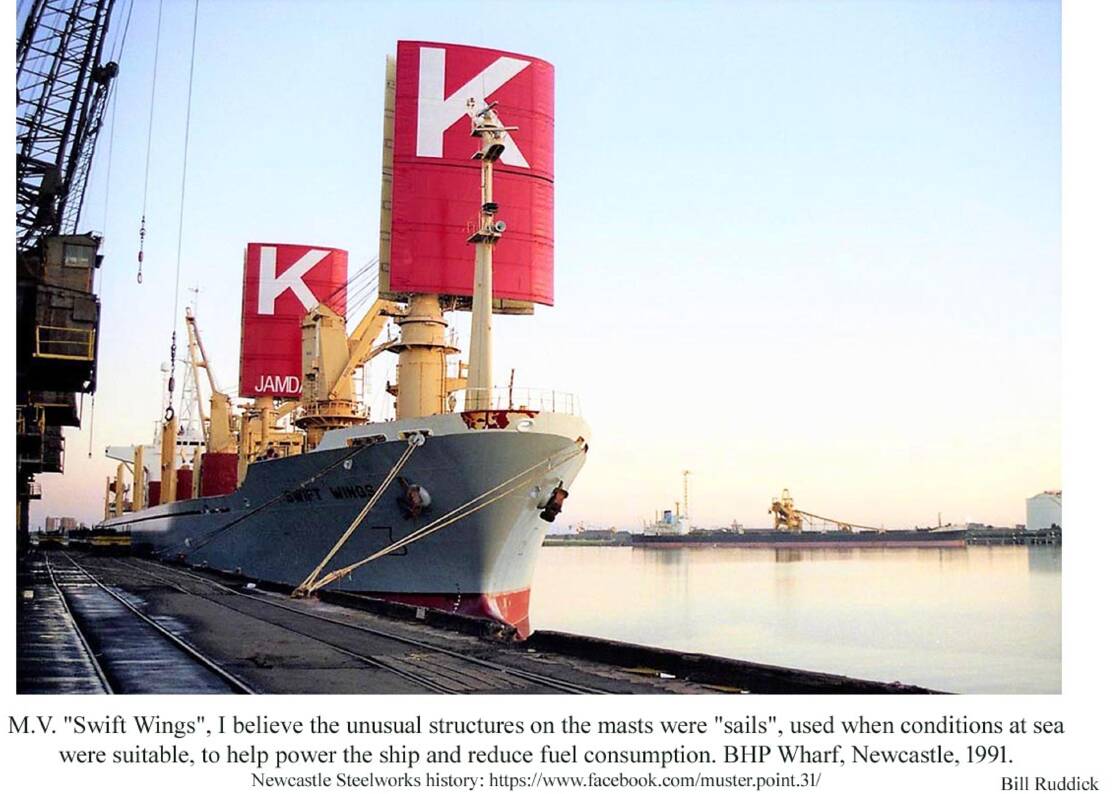
Like the Shofu Maru, the sails were built to expand and contract, depending on the wind.
Climate change wasn't a mainstream concern in the early 1980s, and as Ken wrote at the time, the two sails were added as a response to the second of two OPEC oil shocks in the 1970s, when Middle East oil production dropped in the wake of the 1979 Iranian Revolution, sending energy prices skyrocketing.
Ken wrote that Japan built a fleet of seven such ships for coastal use in the early 1980s before Swift Wings - originally Usuki Pioneer, was built in 1984.
With two sails, the master, Captain Wataru Yoshikawa, said the ship had fuel savings of up to 20 per cent.
Despite these savings, Swift Wings apparently was the only vessel of its kind trading internationally.
The oil shock had not lasted long, and so the idea never really caught on.
Until now.
YESTERDAY'S COVERAGE OF THE SHOFU MARU

WHAT DO YOU THINK? We've made it a whole lot easier for you to have your say. Our new comment platform requires only one log-in to access articles and to join the discussion on the Newcastle Herald website. Find out how to register so you can enjoy civil, friendly and engaging discussions. Sign up for a subscription here.







